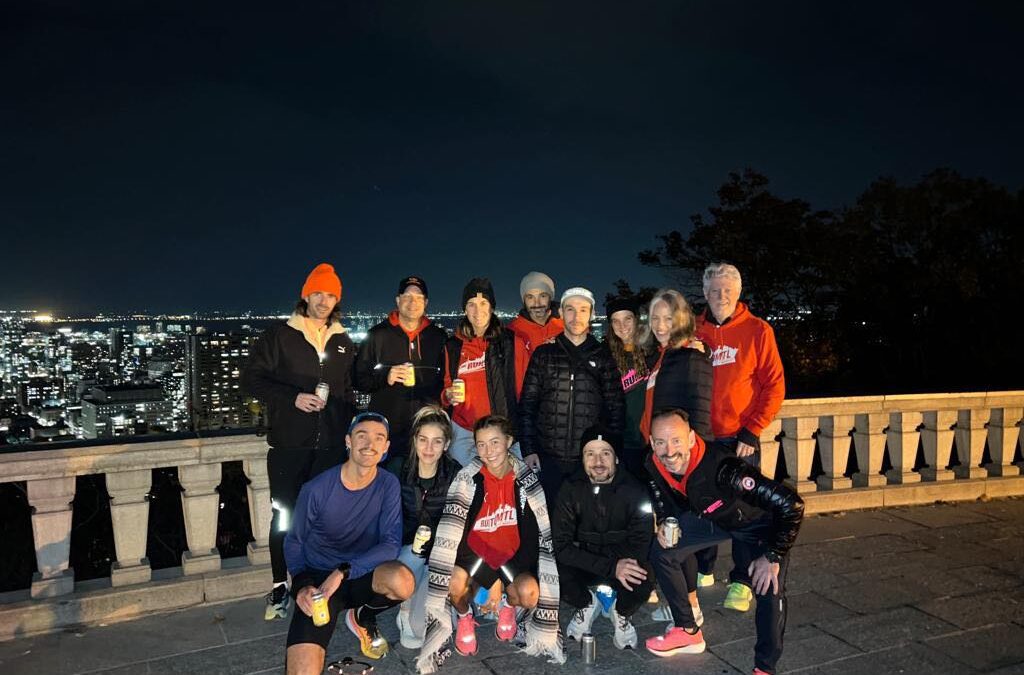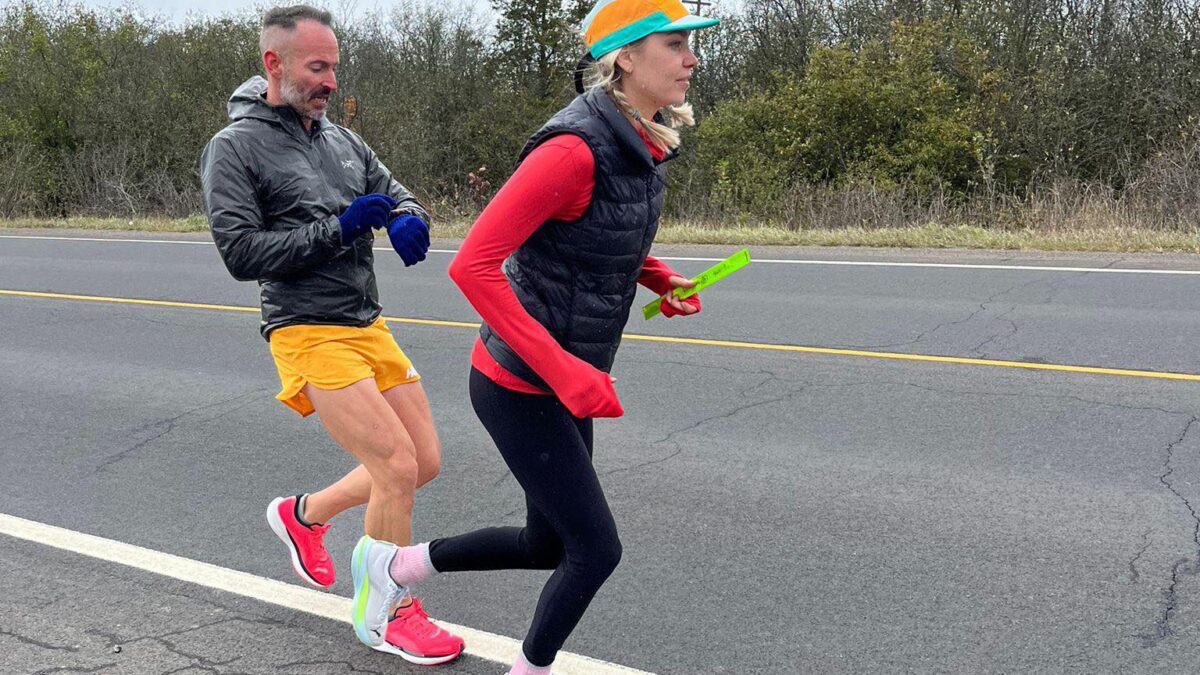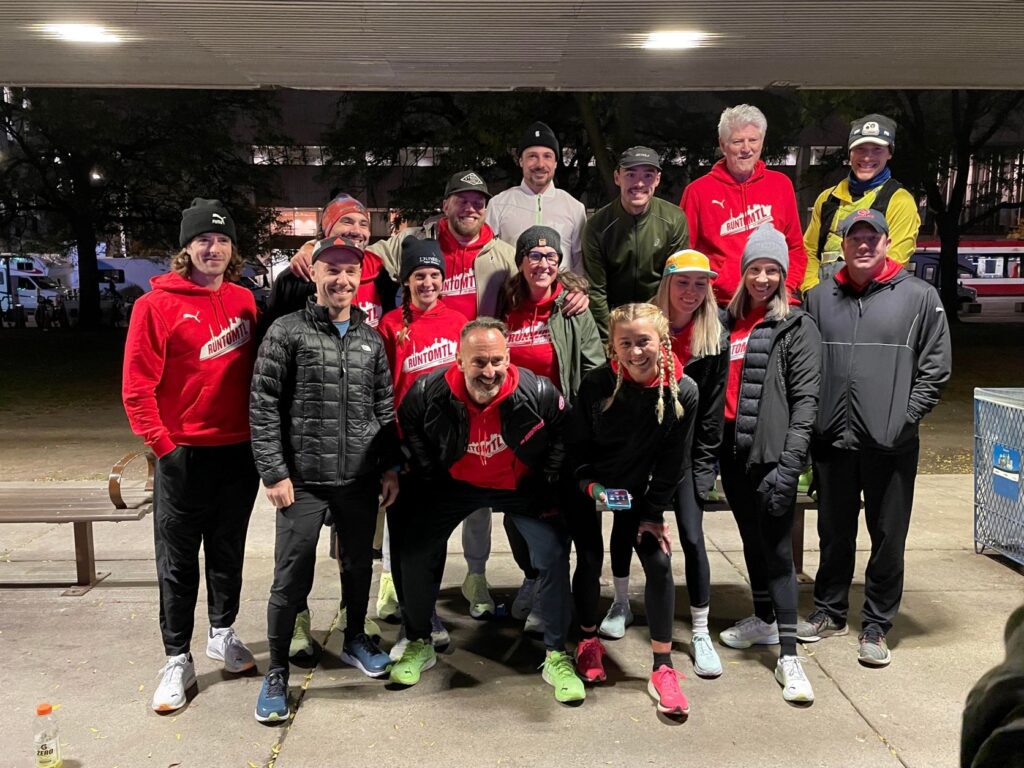Flirting with my comfort-zone: my first ultra-relay
I didn't know what to expect, and my experience wasn't in the sales pitch
 Photo by:
Darren Weldrick
Photo by:
Darren Weldrick
Famous races like Oregon’s Hood-2-Coast (H2C) and California’s The Speed Project (TSP) have always sparked my curiosity about long-distance relay races and what it takes to complete one. Although I’ve never been interested in running an ultra (I haven’t even touched a marathon yet), the relay aspect is attractive to middle-distance runners due to its shorter running legs and team-building element.
Last April, when I covered the TSP virtually for Canadian Running, I was approached by Toronto running coach and Run to Montreal founder Darren Weldrick about joining his 11-person team on a 650 km journey from Toronto’s City Hall to the top of Montreal’s Mont-Royal. Weldrick started Run to Montreal in 2017 as a crazy way to commemorate a lost friend, push boundaries and raise money for a collection of amazing causes. The run has since turned into a race that inspires runners of all levels to test their abilities.

My biggest fear heading into the ultra-relay was wondering how my body would handle a large volume of running in a short period with little recovery. But the moment you step into the RV with your teammates, your plan goes out the window, and the 67 legs of the journey are ultimately decided by who’s fresh and ready to go.
For example, when I finished my first leg (about 10 km), the next runner I passed the baton to fell in her first 400m. She could not continue, so another runner had to step in to complete her leg.
The three most important things in a successful ultra-relay team are communication, support and teamwork. I learned this the hard way, facing hardship not once, but twice.
When you are running through the night, it’s not unusual to encounter animals. During my second leg, outside of Gananoque, Ont., I was charged by two dogs, after my support car went too far ahead. Luckily, I escaped physically unharmed, but our team learned to keep the support car close, in case of emergency.

During the second day, our team stopped the RV for a bathroom break along eastern Ontario’s Hwy. 2, near Long Sault Parkway, where my team accidentally left me behind while I was answering nature’s call (in the woods). I watched as the RV pulled away from the park without me. Not only was my phone on the RV, but I was wearing recovery slides, split shorts, a long sleeve and a Ciele hat. All I had with me was a roll of toilet paper.
I waited at the park for 20 minutes, hoping someone from my team would notice I was gone, but nope. Unsure of what to do, I began to walk east, hoping I would see the RV. Realizing this was ineffective, I stuck out my thumb. It was 7 a.m. Eventually, I threw the roll of TP away, realizing it probably wasn’t helping my chances. About 30 minutes later, a teacher from Cornwall, Ont., picked me up and helped me get back to my team (by coincidence, he was also a runner).
Besides seeing the emotions of our team atop Mont Royal as we finished the 650 km challenge in 47 hours and 47 minutes, my second favourite moment was the ghostly look on my teammates’ faces as I returned to the RV with this story.
If you told me last April that I would cover 70 kilometres in two days, be accosted by aggressive dogs and get left behind by my team, I am not sure I would have done it. But in spite of the tense moments, I’m glad I did it.
Run to Montreal is a 650km ultra-relay that takes place every October and brings together both Toronto’s and Montreal’s running communities. Read more about the race here.

